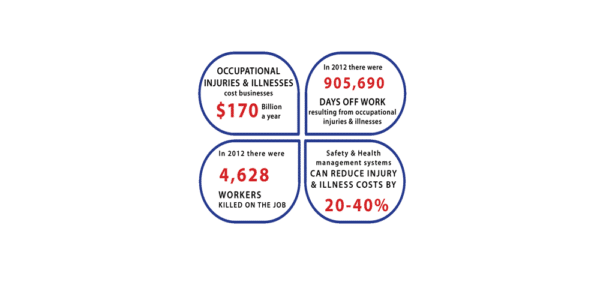Total Health Management operates on the integration of both human resources and risk management within a more “holistic framework,” which enables organizations to both create optimal work conditions and advance worker wellbeing. Total Worker Health®, a NIOSH-developed system of safety and wellness management solutions for workers, is defined by the CDC as “Policies, programs, and practices that integrate protection from work-related safety and health hazards with promotion of injury and illness prevention efforts to advance worker well-being.”
The combination of HR and risk management in combination with a pain management program has proven to improve employee health and morale, reduce medical plan costs, increase productivity, and reduce the frequency and severity of workers’ compensation claims. So how does a company move from risk management to a TWH model?
1. Introduce wellness programs.
While there’s been an understood wall between the risk management and wellness practices, for all practical purposes they are perfectly complementary. Poor employee health negatively affects employee productivity, health insurance costs, and workers’ compensation expenses. A wellness program in principle reduces risk in all of these areas.
Wellness programs have emerged and been embraced by HR in recent years as a way to reduce medical costs and absenteeism. Typical programs included weight loss competitions, daily step programs to achieve healthy milestones, or smoking cessation assistance. The Total Worker Health® model calls for a holistic understanding of and approach to the factors that contribute to employee well-being. Scientific evidence supports what many safety and health professionals, as well as workers themselves, have long suspected—that risk factors in the workplace can contribute to health problems previously considered unrelated to work.
2. Introduce a pain management program.
When it comes to health risk management and wellness, areas of focus are typically fitness, nutrition, safety, and stress. It seldom includes pain management or pain mitigation. Today, wellness programs incorporate these elements, extending to far-reaching self-help subjects like resilience and mindfulness, all routed to one principle goal: changing unhealthy behaviors into healthy behaviors. Many employers today offer health risk assessments to employees to target their specific health problems.
Pain exists on a continuum that represents the gradual changes in intensity. People will generally start off with no pain at all, but eventually they may start to notice some mild discomfort after sitting at their desk too long. It gradually progresses from moderate to constant to a severe, chronic pain that desperately needs attention.
- No Pain
- Mild Discomfort
- Moderate Soreness
- Constant Aching and Stiffness
- Constant Nagging Pain
- Severe Chronic Pain
With proper care, the pain will gradually decrease back down the spectrum, ideally reaching the “No Pain” zone once more. But the longer the pain is left to fester, the more care it will require to get back to normal. Regardless of what has caused the pain, the workplace is affected. Addressing pain issues at the earliest stages within the pain continuum is the most cost effective and typically resolves quickly. To the extent that pain management is a path to Total Worker Health®, organizations must first know what to look for in a proactive pain management program.
The program must, at a bare minimum, encompass a comprehensive set of wellness and prevention initiatives (executed at the workplace) that deliver bottom line results for the customer. In evaluating the historical efficacy of the program, HR and risk managers need to review key performance indicators (KPIs) such as the degree of pain level and frequency reduction, lowered/eliminated medication use, and increases in productivity. Total Worker Health® programs should answer directly: How does implementation correlate to reduced absenteeism and presenteeism, and self-reported improvements in job performance? The program also must show the money in claims it has averted. Utilization figures are also key, as the program ought to demonstrate an ability to engage employees in activities that address, mitigate and even reduce their pain, thus maximizing their own health and well-being.
In conclusion, achieving Total Worker Health® is a process, requiring a new set of parameters and a higher regard for integration among its components. DORN brings proven expertise on weighing and implementing pain management as a vehicle to assist company risk managers while realizing the well-being goals of the entirety of employees and staff who face current and would-be health challenges. Finding the balance is key to retaining of talent, keeping HR in the black and the continuing success of your enterprise. Read our original white paper on Total Worker Health® here: /portfolio/total-worker-health-toward-new-integrated-risk-managementwellness-model/



